How to strategically leverage competitor keywords
Understanding your competitors’ trends and strategies is as important as planning your own. One of the crucial aspects of competitor analysis is researching and leveraging the competitor keywords.
Competitor keyword analysis is a key to find core keywords that can maximize your brand’s conversions, thus is one of the most important factors to consider when doing search engine optimization(SEO) for your brand. In this article, we will explore what competitor keywords are, ways to find them, and strategies to analyze and leverage them effectively.
What are Competitor Keywords?
Competitor keywords are the search terms or phrases that the businesses that you are in rivalry relationship target in their online contents. These keywords are crucial to know for your own (SEO) because these keywords can provide valuable insights into competitors’ strategies and market positions.
How to Analyze Competitor Keywords and Leverage Them
To leverage competitor keywords, you should first conduct competitor keyword research, where you should identify who are your competitors and which are the keywords your competitors are using to be ranked in search engine result pages(SERPs).
Analyzing competitor keywords can be conducted through multiple steps ranging from identifying your competitors to adjusting your own strategies.
1. Identifying Your Competitors
The first thing to do before delving into the competitor keywords is to define who your competitors are. In online circumstances, your competitors would be the businesses who are competing with you to be ranked for the same keywords or same topics. Below are some of the questions you might want to ask yourself when identifying who your competitors are:
- Which brands are targeting the same customer group with me?
- Which brands are trying to solve same problems with me?
- Which brands are on the SERP when I type in my brand on search engines?
2. Competitor Keyword Research
Once you have defined who your competitors are, you should now buckle down to finding competitor keywords. There are several ways you might consider finding competitor keywords.
One of the effective methods of analyzing competitor keywords is identifying gaps between keyword strategies. By analyzing which keywords your competitors are targeting, but you are not, you can discover additional opportunities to expand your presence and attract more new audiences. Meanwhile, identifying keywords that you are targeting, but your competitors are not will help you double-check on which areas you have competitive advantages.
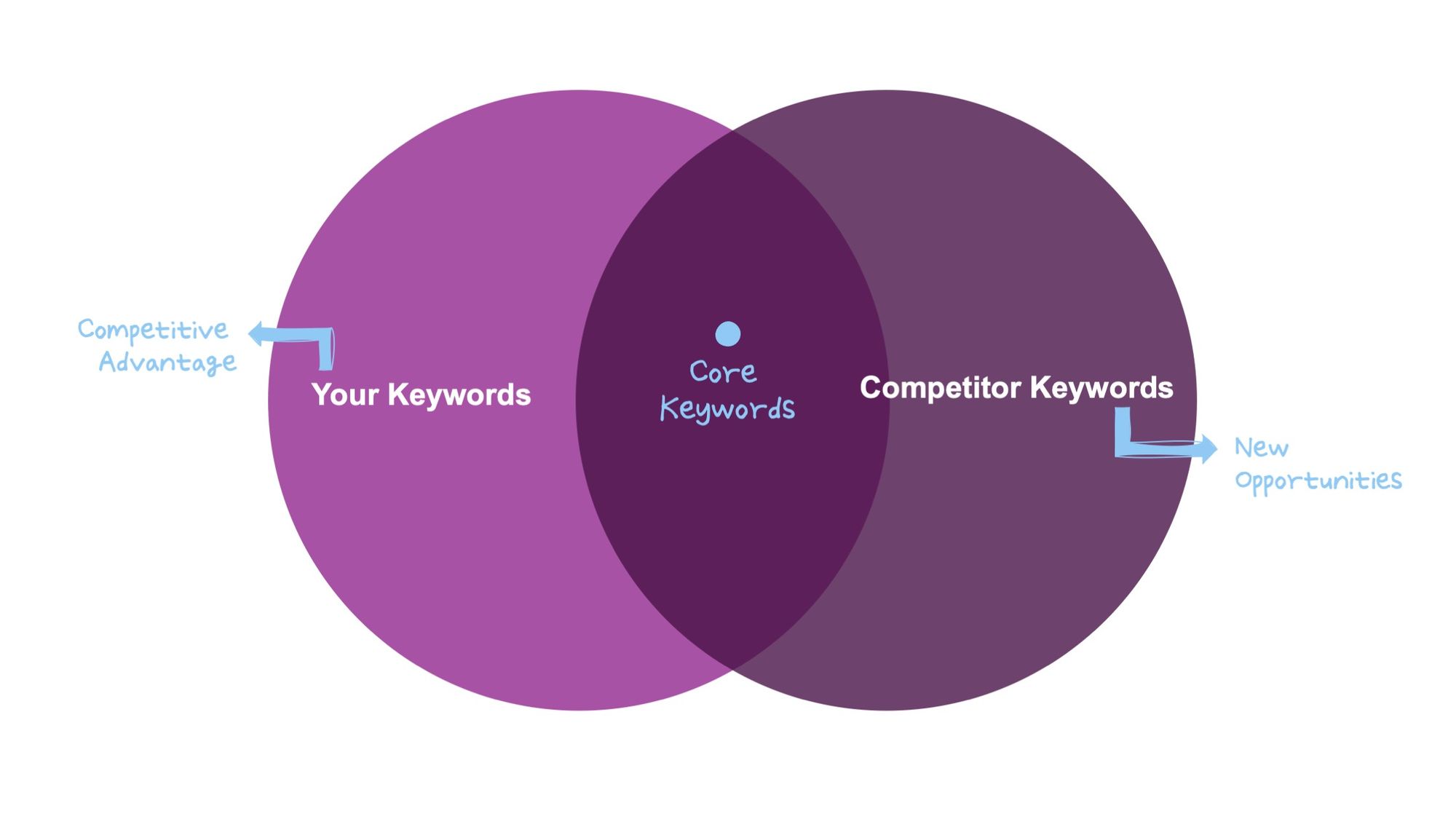 Discover your core keywords by competitor keyword research
Discover your core keywords by competitor keyword research
Thus, each of these ‘gaps’ would represent opportunities for you to either uncover new opportunities or strengthen your current positioning. To do so, you can either conduct a manual job or lean on some keyword tools.
-
Manual Channel Search: you can start by examining your competitors’ websites, blogs, and social media channels to identify recurring keywords.
-
Manual Google Search: you can search on Google or local search engines and identify the top ranking websites for common keywords. In this method, it is important to identify the search intent of your potential customers to find out the core keywords that can actually drive traffic and make conversions. You should be aware not to consider the search volume as the only indicator to decide which keyword to target.
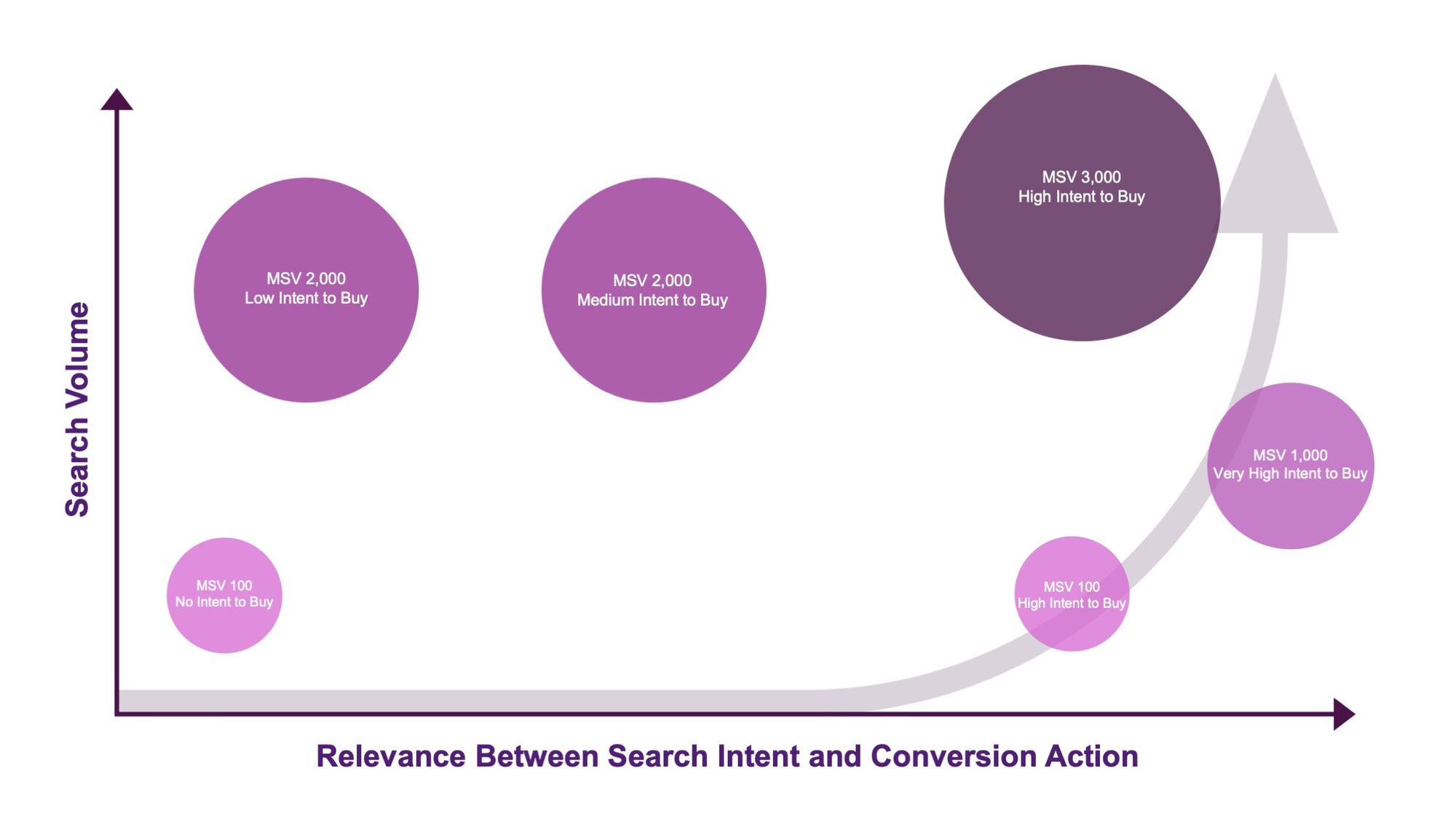 Considering both the search volume and the relevance to increase conversion
Considering both the search volume and the relevance to increase conversion
Above manual handworks, you can use some SEO tools to identify and strategically analyze competitor keywords.
- SEMrush:
- SEMrush is a SEO tool that offers competitor analysis features including keyword research, domain comparison, and backlink analysis. Using the Keyword Gap tool in provided by SEMrush, you can figure out your rankings compared to your competitors’ keyword rankings.
 SEMrush ‘Keyword Gap’ Tool
SEMrush ‘Keyword Gap’ Tool
You can enter up to four competitor domains and choose the keyword types- organic keywords, paid keywords, and PLA keywords- that you want to discover and compare. Then, you can select the target country. Using this tool, you can receive you and your competitors’ keyword data and figure out your competitive advantage and some important keywords that you are actually missing out to target.
You can also use alternative SEO tools to figure out the competitor keywords including Ahrefs, SpyFu, Similarweb, or Wordstream. Regardless of the type of the tool you use, the important part is to well analyze the search results, where you can use the Competitor Keyword Template provided below.
If you want to take a look into some South Korea-specific trends and keywords, you can use Naver Datalab(datalab.naver.com) tools. By using the tool, you can figure out the search data according to keyword clusters.
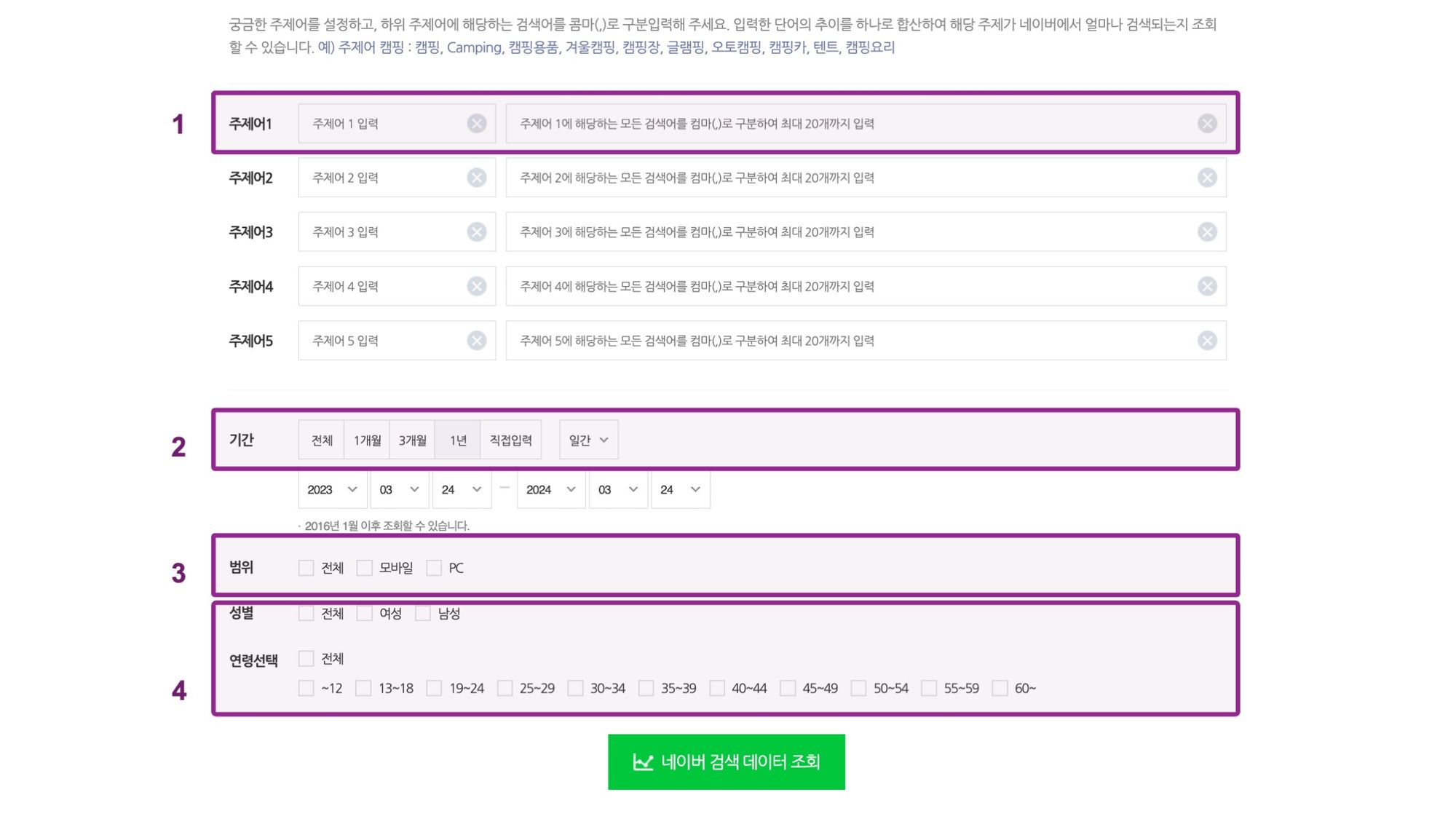 Naver Datalab Tool
Naver Datalab Tool
- In section 1, you can put in up to five keyword clusters and up to twenty search keywords accordingly, to each cluster groups.
- In section 2 to 4, you set up the data of time period, search platforms(mobile, PC, or both), and the demographics of searching populations(age range and gender).
3. Analyzing Competitor Keywords
Competitor keyword research is only just an initial step to gain competitive advantage. Once you have identified the keywords, you should strategically analyze and leverage them to enhance your contents and ultimately maximize your brands’ SERP performance.
You can download the template below to easily organize and analyze your competitor keywords.
📑 Competitor Keywords Analysis Template
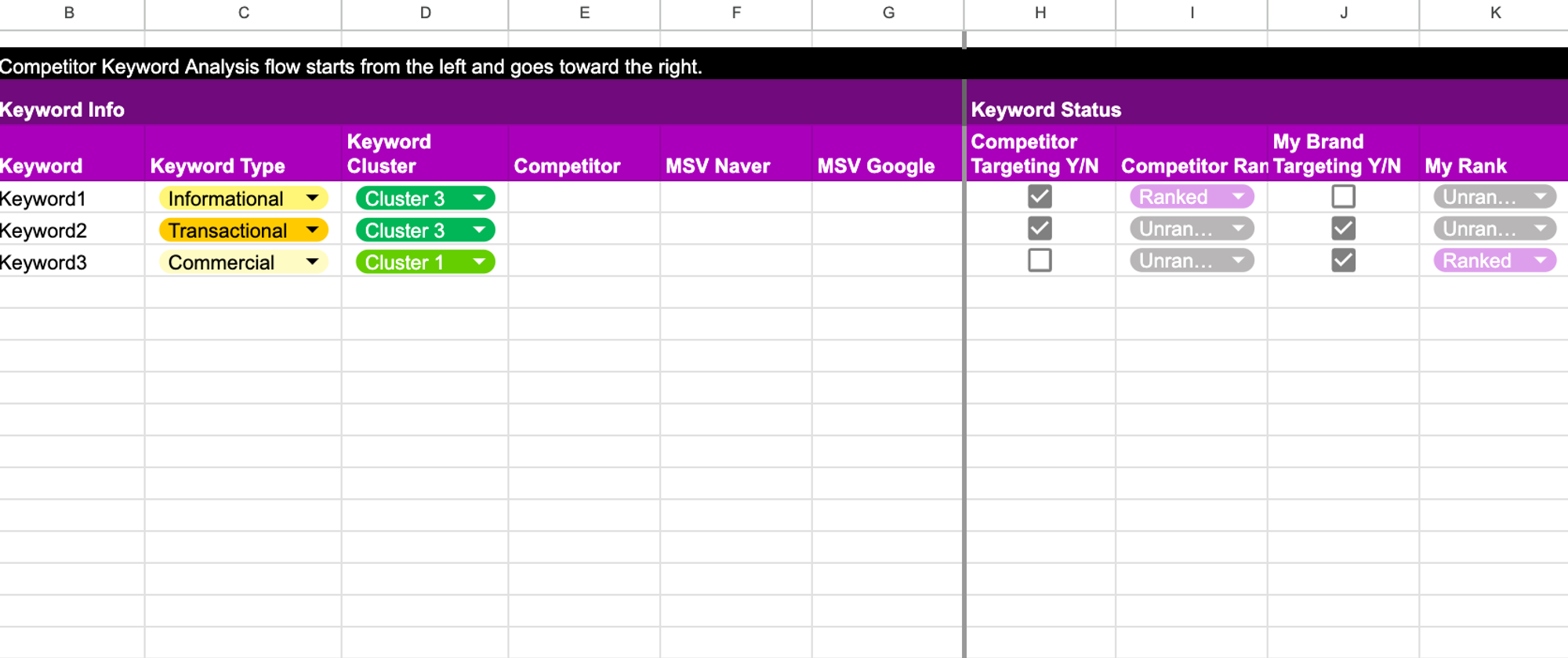 Competitor keywords analysis template
Competitor keywords analysis template
- To begin analyzing the keywords with the template, first list down all the competitor keywords you have found out on Column B and try to better identify your competitor keywords by adding information into Column C and D.
- You could fill in the keyword cluster on Column D by grouping the keywords to several clusters based on inter-relevance, brand relevance, and customer decision journey. By creating keyword clusters based on the relevance and search intents, you can consider multiple keywords efficiently by comparing clusters based on search volumes or difficulty scores.
- Keyword Type on Column C identifies on which stage of the keyword funnel does your keyword belong to. Matching your keywords to each stage of the keyword funnel will help you plan on your next-steps by understanding customers’ intent behind searching. You would be able to identify the search intent by looking at the top ranking contents on Google SERP, as Google shows the most relevant pages to users.
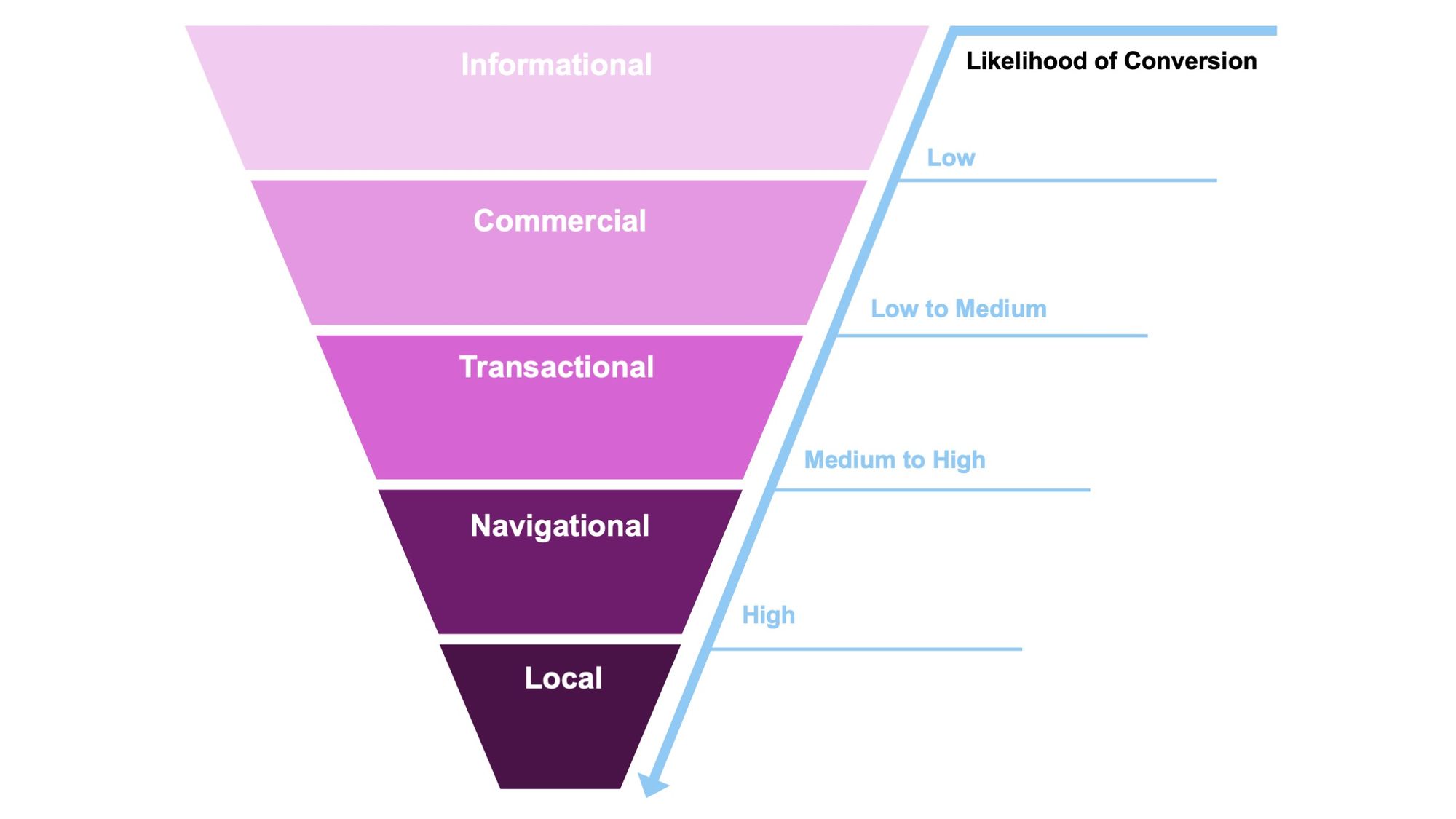 Keyword search intent funnel
Keyword search intent funnel
-
Once you have identified the search intent behind each keyword, you will be able to plan on next steps accordingly. If you cannot determine the search intent because the SERP contents are mixed up, you could consider targeting more specific, long-tail keywords to define the intents.
-
You could fill in the keyword cluster on Column D by grouping the keywords to several clusters based on inter-relevance, brand relevance, and customer decision journey. By creating keyword clusters based on the relevance and search intents, you can consider multiple keywords efficiently by comparing clusters based on search volumes or difficulty scores.
-
On column E, you can put in who your competitor are, and you can insert the MSVs of the keywords on Naver and Google, the two most dominant search engines in South Korea.
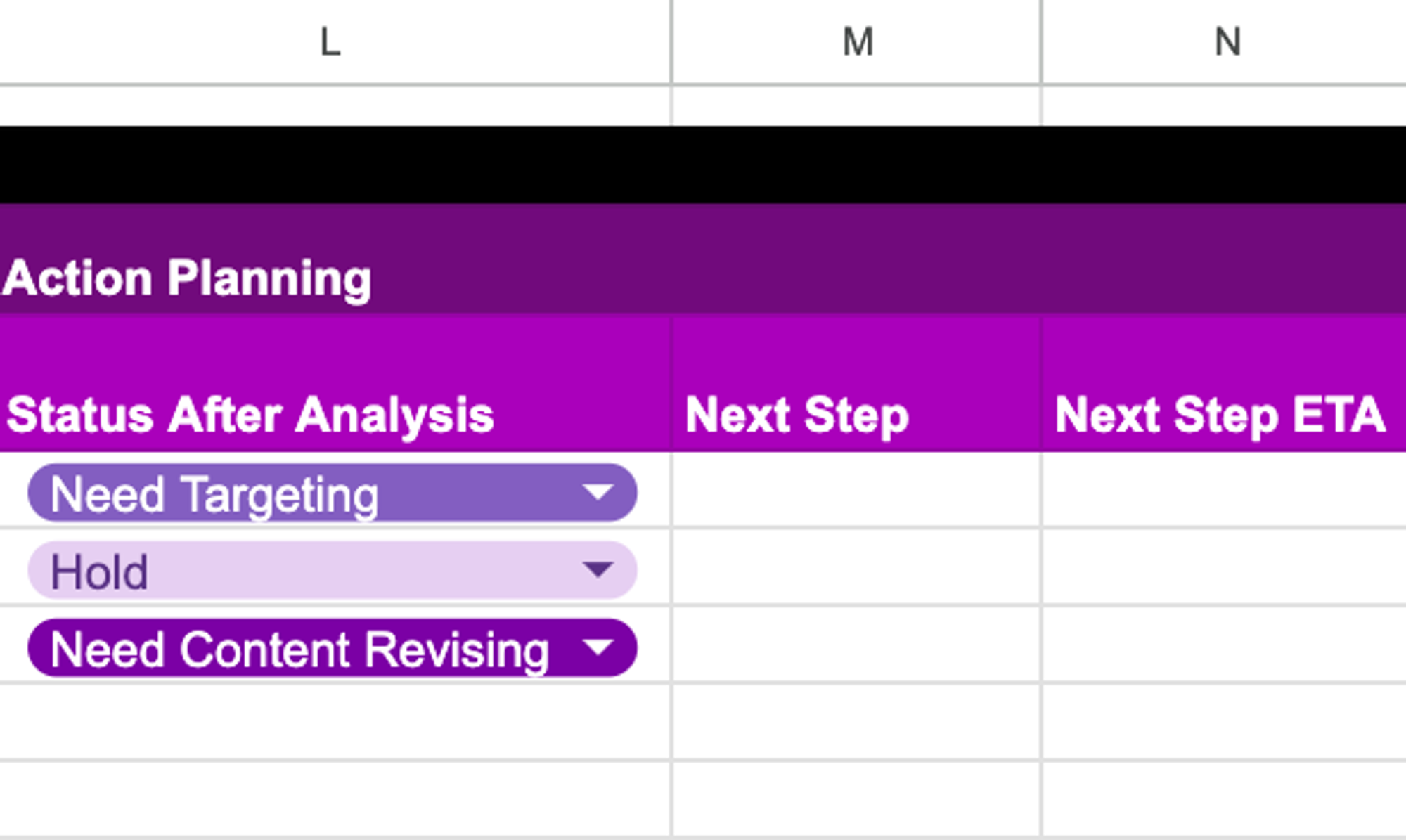 Using the template to plan on the next steps
Using the template to plan on the next steps
-
On the next 4 columns, you could record the current status of the keyword in terms of your brand and the competitor’s brands. By doing so, you can identify your core keywords and will be closer to the exact customers that you want to drive. Then you can adjust your keyword strategies by planning the next steps accordingly, which will be recorded on columns L to N.
4. How to Leverage Competitor Keywords
You can also leverage competitor keywords to optimize your contents. Incorporating relevant competitor keywords into your website contents, blog posts, and other social media posts can improve your contents’ search engine rankings resulting in more traffic inflow. Still, it is important to keep in mind that you should integrate these keywords seamlessly into the contents so that you can provide actual values to the potential customers, rather than merely stuffing them for SERP rankings.
One step further, you can gain deeper valuable insights by analyzing the search engine result pages(SERPs) of the keywords- either your target keywords or the competitor keywords. By analyzing SERP, you can discover opportunities to enhance your own search engine performance and improve your visibility on the organic search pages. SERP analysis can also help you to gain better competitor advantage by identifying the status of competitors’ ranking contents and keywords. To do so, you can employ the same tactics used above to define your competitors and identify the competitor keywords and search the keywords you’ve found on the Search Engine to check the ranking status and contents.
To check the keyword ranking status on Naver SERP on article basis, you can use the SERP Checking Tool. If you put in the keywords that you want to check and the content url, you will be able to check the rankings of each keyword on Naver SERP and the average ranking status.
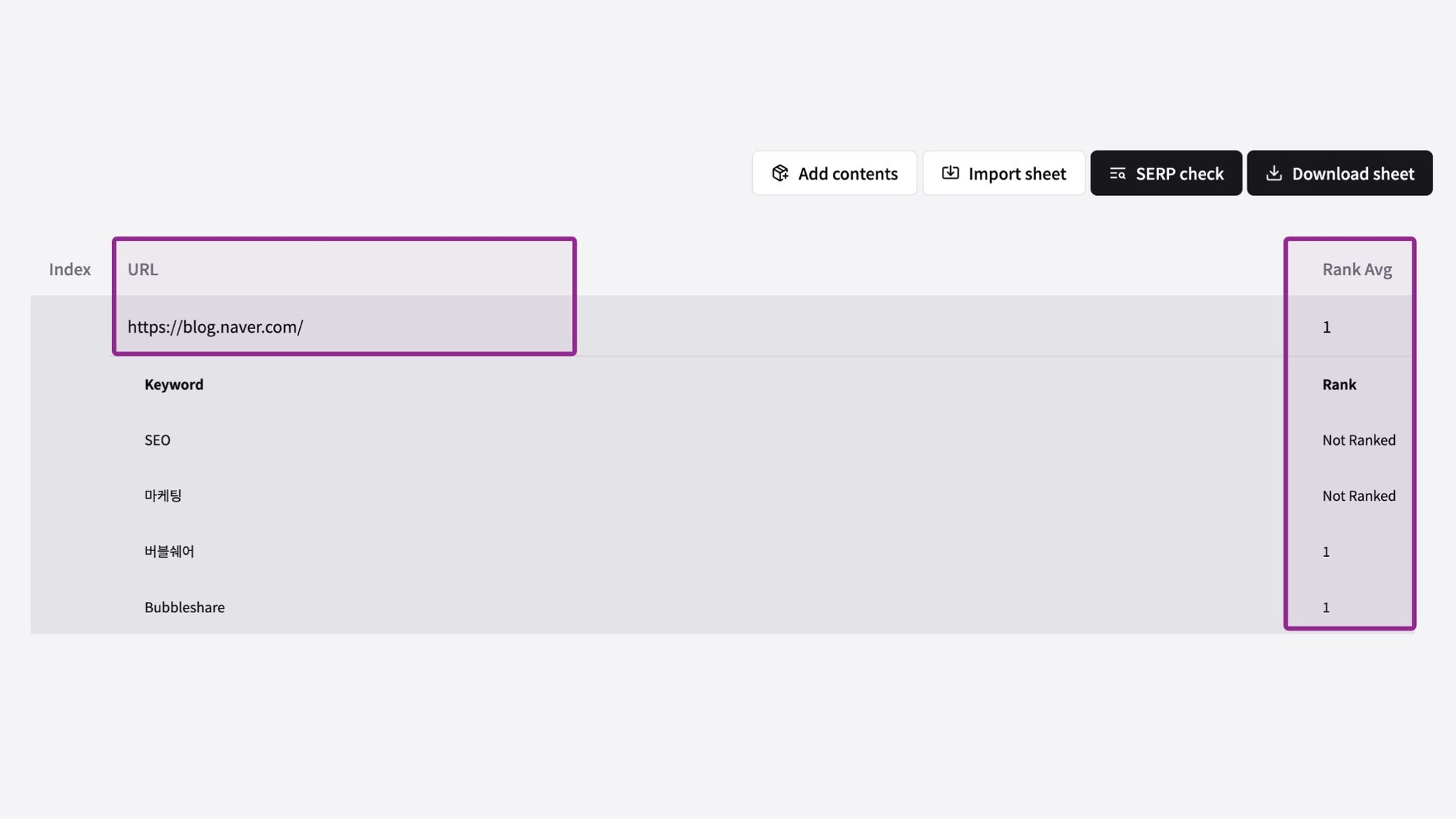 BubbleShare Naver Serp Checking Tool
BubbleShare Naver Serp Checking Tool
It would be especially helpful to examine the formats of ranking contents from each keyword. You should figure out which contents- blog articles, short blogs, case studies, news articles, images- are ranking dominantly. If you recognize some preferred contents on Google or local search engine’s SERP for each keyword, you could enhance your own rankings by adjusting your contents accordingly.
Conclusion
Identifying and analyzing competitor keywords should be a continuous process. As the online presence of brands becomes more and more crucial in digital landscape, so do the importance of analyzing competitors’ strategies. You should continuously monitor competitor keywords’ performance, changes in search trends and content trends, and adjust your brand’s own strategy accordingly. By doing so in an agile and responsive manner, you will be able to maintain a competitive advantage and better achieve your marketing goal.







